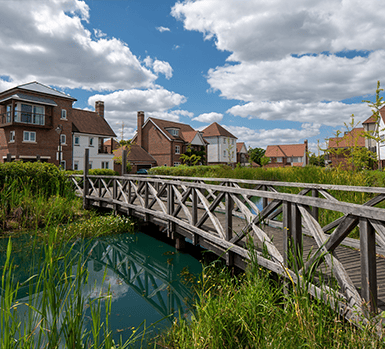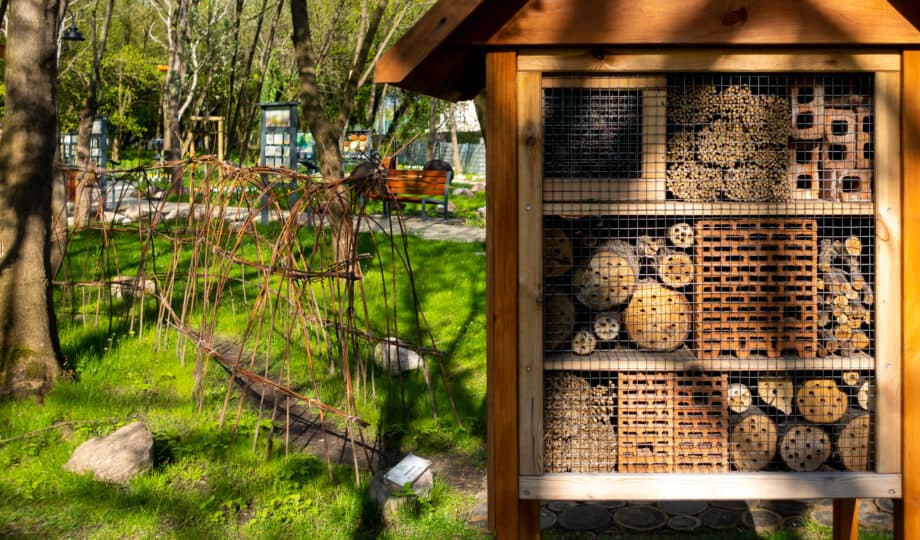Biodiversity Net Gain: Are you ready for the incoming legislation?

But as we come to grips with the fundamental intrinsic value of nature, what does the BNG legislation mean for the future of Britain’s ecosystems, and how can the policy create true value for biodiversity?”
The UK sits, undeniably, in a biodiversity crisis. The area of biodiverse ecological communities that remains intact in the UK, is just half that of the European average and with species having declined by 19% since the 1970s at an increasing rate, there are only so many ways to write ‘existential threat’. Though typically pushed behind popularised sustainability topics such as Net Zero, the introduction of new Biodiversity Net Gain (BNG) legislation in England, aims to help bring natural world back into the spotlight. But as we come to grips with the fundamental intrinsic value of nature, what does the BNG legislation mean for the future of Britain’s ecosystems, and how can the policy create true value for biodiversity?
After worrying delays, environmentalists can now breathe a sigh of relief as the Government officially unveiled the launch date for BNG legislation: February 12, 2024. Biodiversity Net Gain legislation, as summarised by UKGBC: “requires all new development to produce a quantified positive habitat change by a minimum of 10% from the pre-development biodiversity value through the use of the DEFRA metric”. The policy, as part of the 2021 Environment Act, will apply to all new development [bar a few exemptions] across England, beginning with large sites in February, followed by smaller sites in April. This can be achieved onsite (in the boundary of the development) or offsite (outside of the development); the weighted pros and cons of each (a long-standing debate), very much dependant on the characteristics of the specific site. The mission of this policy is to support the recovery of ecosystems by integrating a ‘thought for nature’ into the very design and planning stages of new development. Ultimately, it hopes to leave our landscapes in superior condition and quality than their present state. UKGBC has long supported the introduction of this policy, as an essential step to put the built environment on the right track towards nature recovery.
Devils in the policy details
However, BNG hasn’t come without it’s bumps in the political road. Reading in-between the lines, technical loopholes have left many tangled in knots with potential consequences for nature; issues surfacing around the de-minimis, custom build and the calculation of biodiversity baselines.
UKGBC has been busy working closely with Defra – alongside concerned members and other NGOs – to ensure that the incoming BNG policy is robust. Particularly, we’ve been raising concerns regarding the de minimis threshold, , making sure its implementation does not undermine predicted business investment and confidence.
There are other clear blind spots. For example, the requirement that a qualified ‘competent person’ carry out baseline assessments is unclear – with the definition of a ‘competent person’ being blurred. On top of this, the baseline assessments themself have their own calculation issues. Like any form of self-reporting, it’s difficult to trust the data without 100% transparency, and without rigorous monitoring or quality control, we run the risk the maths might not ‘add-up’ (it doesn’t take A-level maths to realise 10% of a baseline, suspiciously identified, as 0, is 0). This in combination with shortfalls of education funding, places local authorities, the ‘policing bodies of BNG’ in a precarious and unprepared position endangering the very legislation here to protect nature.
Going above and beyond
Though the policy has its grey areas, it is a necessary potential springboard for wider, positive impacts if we are proactive”
Though the policy has its grey areas, it is a necessary potential springboard for wider, positive impacts if we are proactive. Emphasised in the UKGBC Biodiversity and Environmental net gain project, the long-term success of this policy requires the industry to go beyond the basics. BNG 10% should act as a starting benchmark to inspire innovative nature-based design solutions to help developments go above and beyond legislation, not just a minimum number.
Not a solo mission
Achieving positive change absolutely requires connecting with each key stakeholder, from project design all the way to long-term maintenance plans. The effects of this policy ripples beyond the bounds of developer design documents but influences the actions of the whole built environment supply chain from architects and designers to insurance and finance operatives. Collaboration allows the right questions to be asked; who in the community could benefit from improving the health of local ecosystems What are the long-term financial costs to consider? How can my design align with my local policy requirements? Asking the right questions will help create the right outcomes.
“Design creates culture. Culture shapes values. Values determine the future”
Though Robert L. Peters may not have been thinking of biodiversity legislation specifically in this quote, it resonates strongly in the realm of impactful development as a well-thought-out design is indispensable in this process for long-lasting value.
Biodiversity legislation lays the groundwork, necessitating specific design considerations to meet legal standards. This includes providing evidence that the development adheres to the Mitigation Hierarchy principles (which now thankfully applies to all habitat types ), conducting a feasibility plan, and identifying areas of strategic significance in Local Nature Recovery Strategies as recommended by local authorities.
Is compliance enough? UKGBC’s checklists outline the legal policy benchmark, while urging additional design considerations for an elevated project impact. Embracing a ‘nature-first’ approach ensures that nature takes precedence in both planning and design, rather than being an afterthought. To genuinely prevent ecological harm, net gain delivery strategies, whether focusing on onsite or offsite, must encompass broader local environmental policy obligations such as key conservation areas and sites of cultural interest. Natural England’s Habitat Management and Monitoring Plan (HMMP), provides a template for those completing both onsite and offsite developments, to understand how to track and set targets for habitat enhancement. It’s also crucial to factor in the practical on-the-ground implications of the design plan, considering the effects of construction workers onsite and the potential damage caused by machinery.
However, a good design can’t last without a thought to how it’ll be paid for. With multiple key funding avenues available for BNG projects, this is a market growing ever faster, and evermore complex.”
Although now not an active focus area for Government, Environmental Net Gain also remains a valuable tool, and one being embraced by many built environment organisations. It allows developers to explore a spectrum of benefits from integrating socio-cultural amenities such as parks and active transport facilities to considering the added societal value of a duck pond.
However, a good design can’t last without a thought to how it’ll be paid for. With multiple key funding avenues available for BNG projects, this is a market growing ever faster, and evermore complex. Whether developers decide to buy credits, start a habitat bank, or start a long grant application – it’ll be vital to crunch the numbers for the short, and long term.
The bigger picture
The UK biodiversity crisis is one that affects us all, and fundamentally the rights of the ecosystems we so humbly rely on. Vital after the 12th of February is to not become tangled in the political and technical nuance, but focus on the bigger picture, and ambition of this policy for us, and for nature.
This blog was written by Kerri McCarton, Resilience and Nature Project Coordinator, lead on our Biodiversity Net Gain workstream.
Related
Delivering Biodiversity Net Gain can transform the UK’s built environment – but only if we prevent loopholes

BNG delay adds further blow to sustainable development and risks undermining efforts to protect nature

UKGBC launches report to unlock financing for biodiversity at scale

UKGBC infographics explain why Biodiversity Net Gain matters for the built environment


